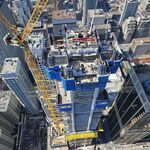Objectively this is quite valid, but subjectively the cadence of LRT is part of the customer sell. People relate well to subway because it has a zoom, stop, get moving again cadence. When a subway train creeps, or dwells in stations, you can see peoples' impatience factor grows rapidly, even if the creep only adds a few sconds to the trip time.
My fear with our new LRT lines is that the stops, whether platform stops or traffic related, will set the tone of a liesurely plod that is closer to current streetcar than 'rapid' transit. If so, people will not see LRT as good value. Even worse, if this style of operation gets into the operating culture, you will see schedules padded and timekeeping neglected. The 'need for speed' needs to be cemented in LRT from the design onwards. Objectively, we may be quibbling over 3 or 4 minutes in trip time, but subjectively those minutes matter a great deal.
- Paul





